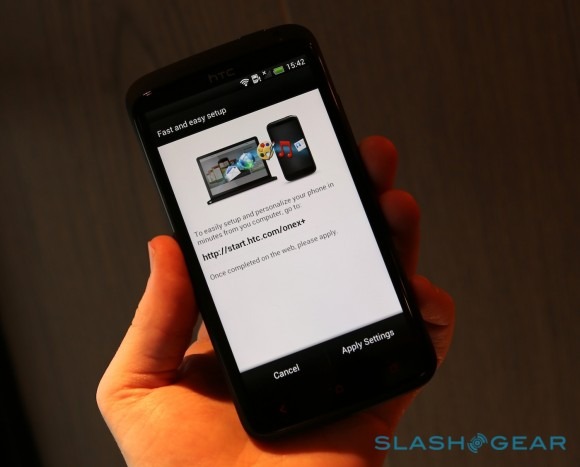Is HTC Finally Making Sense?
After its annus horribilis of 2011, HTC's year is looking considerably better. A solid reception to the One series and a potentially key deal to be the face of Windows Phone 8 – seized right under Nokia's nose, no less – is the dressing around hardware that is finally compelling: attractive, competitively priced, not embarrassed in specifications. Now, with the HTC One X+, there are signs that HTC is addressing its last big blot on the score-sheet: cloud services.
I've been a vocal critic of HTC's cloud strategy in the past. The company had a head-start on mobile device sync, on remotely accessing a smartphone from the browser, of streaming video, of cloud gaming; it frittered each advantage away, either leaving them to wallow with little promotion and even less love, or seemingly forgot it had them altogether. "Quietly blundering" was the HTC strategy, culminating in the bizarrely handled axing of HTCSense.com services altogether.
[aquote]Any company squandering a potential advantage deserves to be scolded[/aquote]
But it's not vitriol for vitriol's own sake. In a market where Apple and Samsung have so definitively raised their game – and aren't averse to combining competition on the shelves with some back-stabbing in the courtroom – any company that squanders any potential advantage deserves to be scolded.
HTC is now taking tentative steps back into the cloud. HTC Sense 4+, which debuts on the new One X+ flagship, reboots Sense online with "Get Started" – a way to easily configure your phone without having to actually paw and swipe at it. It's front and center in the initial setup wizard and – as one of the few obvious changes in Sense 4+ – something HTC appears to be focusing on.

It's very early days. Right now, "Get Started" is just that: a starting point for new Android users. You can set up your new device online – choose wallpaper, homescreen layout, and apps to download from Google Play – but you can't then backup any changes you make on the phone itself. The sync is all one-way, a starting point (and a reset point) though there's no real ongoing reason to keep visiting the online tool.
[aquote]HTC could play on the geeky anticipation felt while waiting for a new toy[/aquote]
Nonetheless, I'm cautiously admiring of the new strategy. From what we've seen so far it's being built out in recognition of HTC's target audience: fresh smartphone users excited about their first device. The "set it up while you wait for it" approach could be a strong marketing point, playing on the geeky anticipation people feel when they're waiting for a new toy. "Don't just watch out the window for the mailman," HTC should be telling people, "make your phone your own before it's even in your hands."
Sense online, in its old form, could've been a sticking point for HTC users. The value-add it brought should've been something HTC played on: don't jump ship to iPhone, or another Android OEM, because then you lose out on contacts sync, on remote backup, on phone tracking and remote control in the comfort of your browser. Given the success of iCloud (and the persistent rumors that Samsung is developing its own, ahem, homage with S Cloud), HTC would be foolish not to revisit that strategy with Sense online 2.0.
HTC needs to be careful as it's being expansive. Just as it needs to maintain sight of its "Hero Device" strategy, it also needs to deliver pitch-perfect cloud services. A 25GB DropBox bundle isn't enough any more; users want holistic, integrated experiences they can't get elsewhere. Apple has shown us that you needn't throw the world at your audience, that it's enough to give them a few core gems that are easily grasped and have clear value. Now, HTC needs to start looking at more than just one device after the next, and frame its line-up with a portfolio of cloud services that bring context and value users understand.
More on the HTC One X+ and Sense 4+ in our full hands-on
